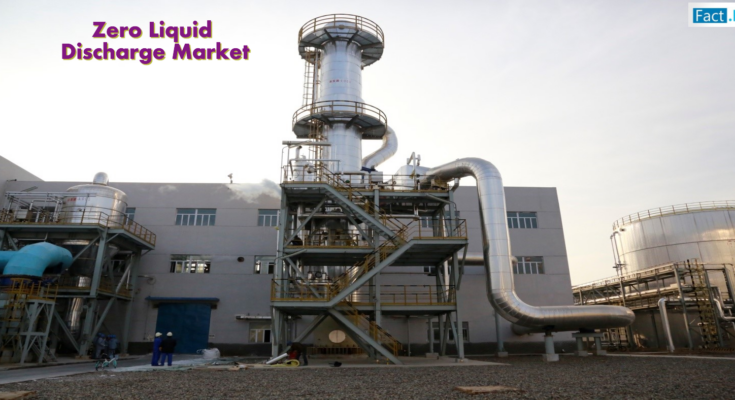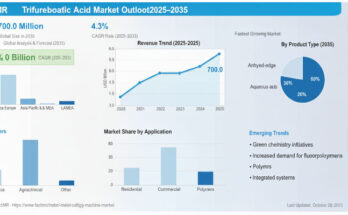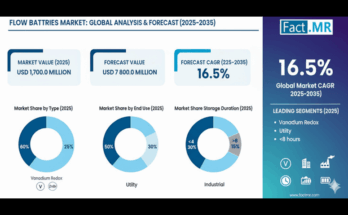As industries globally strive for sustainability and environmental compliance, zero liquid discharge (ZLD) has emerged as a critical solution for managing industrial wastewater. The ZLD market is witnessing notable expansion driven by tightening environmental regulations, water scarcity concerns, and the need for responsible industrial practices. By ensuring that no liquid waste is discharged into the environment, ZLD systems align with global sustainability goals, offering a closed-loop solution that recovers and reuses water while minimizing environmental harm.
Market Overview:
Zero liquid discharge refers to a wastewater treatment process that eliminates all liquid waste from a system. Through a combination of technologies such as reverse osmosis, evaporation, and crystallization, ZLD systems enable the recovery of clean water and solid waste for safe disposal or reuse. Industries such as power generation, oil & gas, chemicals, mining, and pharmaceuticals are increasingly adopting ZLD solutions to meet regulatory standards and optimize resource utilization.
The ZLD market is characterized by two main technological approaches:
- Conventional ZLD systems that rely on tried-and-tested evaporation and crystallization techniques.
- Hybrid ZLD systems that integrate membrane technologies with thermal processes to enhance efficiency and reduce energy consumption.
Regional Insights:
North America:
North America continues to lead in ZLD technology adoption due to stringent environmental regulations, especially in water-intensive sectors such as energy and petrochemicals. The region’s focus on corporate sustainability and advanced industrial infrastructure supports the growth of both conventional and hybrid ZLD systems.
Europe:
Europe follows closely, with its regulatory landscape shaped by water reuse directives and circular economy principles. Countries across Western and Northern Europe are promoting water-efficient industrial practices, encouraging industries to deploy ZLD solutions to comply with zero-waste policies.
Asia-Pacific:
Asia-Pacific is emerging as a fast-growing ZLD market, particularly in countries facing acute water stress and rapid industrialization. Governments in the region are enforcing stricter discharge limits and incentivizing water recycling, leading to increased deployment of advanced ZLD technologies across industries such as textiles, power generation, and pharmaceuticals.
Latin America & MEA:
In Latin America and the Middle East & Africa, adoption is gaining momentum as industries face pressure to manage limited water resources and environmental impact. Public-private partnerships and foreign investments are driving the implementation of pilot ZLD projects in these regions.
Key Market Drivers:
Environmental Regulations:
Governments and regulatory bodies worldwide are imposing strict discharge norms, pushing industries to adopt ZLD systems to ensure compliance. Regulatory enforcement in sectors like power generation, oil & gas, and chemicals is a major catalyst for ZLD adoption.
Water Scarcity:
Growing concerns over freshwater availability are prompting industries to invest in technologies that reduce dependency on external water sources. ZLD systems not only help conserve water but also offer long-term operational benefits by reducing water procurement and waste disposal costs.
Technological Innovation:
Continuous advancements in membrane filtration, thermal evaporation, and crystallization technologies are enhancing the performance and cost-efficiency of ZLD systems. The development of hybrid ZLD technologies is making these systems more adaptable and scalable for different industrial applications.
Industry Sustainability Goals:
As corporate sustainability becomes central to business strategy, companies are actively investing in eco-efficient technologies. ZLD aligns with ESG (Environmental, Social, Governance) objectives by ensuring minimal water discharge, reduced pollution, and improved water reuse capabilities.
Key Trends & Forecast:
Integration of AI and IoT: Smart ZLD systems are using AI and IoT to monitor real-time system performance, predict maintenance needs, and optimize resource use, improving operational efficiency.
Energy-Efficient ZLD Designs: Manufacturers are developing energy-saving technologies to reduce the high operational costs historically associated with ZLD systems.
Modular & Mobile ZLD Units: Portable ZLD systems are gaining traction in remote or temporary industrial operations, offering flexibility and faster deployment.
Rise of Hybrid Systems: Combining membrane filtration and thermal technologies, hybrid ZLD systems provide greater adaptability and lower energy consumption, especially in industries with complex wastewater profiles.
Public-Private Collaborations: Governments are partnering with private players to support large-scale implementation of ZLD solutions through incentives and infrastructure support.
Technology Outlook:
Conventional ZLD:
These systems typically include pre-treatment, brine concentrators, and crystallizers. Though capital-intensive, they are proven in achieving complete liquid waste elimination and are widely used in sectors with high TDS (Total Dissolved Solids) content in wastewater.
Hybrid ZLD:
Hybrid systems combine membrane technologies like ultrafiltration or reverse osmosis with thermal processes. These systems offer benefits like reduced footprint, lower operational costs, and better scalability, making them ideal for industries seeking flexible and efficient solutions.
Application & End-Use Outlook:
Power Generation:
Power plants are major consumers of water and face strict regulatory scrutiny regarding wastewater discharge. ZLD systems help power facilities manage blowdown water and achieve compliance with zero discharge mandates.
Oil & Gas:
The oil and gas industry generates significant volumes of wastewater during extraction and refining. ZLD solutions enable the treatment and reuse of produced water, reducing freshwater usage and environmental contamination.
Chemicals & Petrochemicals:
With complex effluent profiles and stringent discharge norms, chemical manufacturers are among the leading adopters of ZLD systems. ZLD technologies help recover valuable byproducts while minimizing environmental risk.
Mining:
Mining operations often produce wastewater with high levels of heavy metals and solids. ZLD systems ensure safe wastewater treatment and allow for water recycling, reducing ecological impact and improving community relations.
Pharmaceuticals:
The pharmaceutical industry must treat high-contaminant effluents with care to prevent environmental and public health risks. ZLD systems support safe disposal and recovery of water, aiding compliance with environmental and safety standards.
Food & Beverage:
Wastewater from food processing plants is rich in organic content. ZLD technologies enable the effective treatment and reuse of water, ensuring sustainable water management in food production.
Others:
Industries like textiles, pulp and paper, and semiconductors are also increasingly investing in ZLD systems to manage effluents and enhance water efficiency.
Competitive Landscape:
The ZLD market is competitive and innovation-driven. Key players are focusing on developing energy-efficient, modular, and intelligent ZLD systems to cater to diverse industry needs. Strategic partnerships, mergers, and investments in R&D are shaping the future of the market.
Manufacturers are also expanding geographically, especially in high-growth regions, to tap into rising demand for sustainable wastewater treatment solutions. Offering turnkey solutions and lifecycle support services is becoming a key differentiator in winning large industrial contracts.
Challenges:
Despite its benefits, ZLD adoption is not without challenges. High capital and operational costs, complex wastewater chemistry, and energy requirements can be barriers, particularly for small and mid-sized enterprises. However, innovations in low-energy systems, hybrid technologies, and government incentives are gradually overcoming these obstacles.
Future Outlook:
The ZLD market is poised for robust growth as sustainability, water conservation, and regulatory compliance become central to industrial operations. With technological advancements, evolving policy frameworks, and growing awareness about water stewardship, ZLD systems are transitioning from optional to essential across industries.
As industries aim to achieve net-zero waste targets, the demand for intelligent, modular, and scalable ZLD systems will increase. Companies investing in advanced ZLD technologies now are likely to gain long-term advantages in regulatory compliance, cost savings, and environmental impact.
Conclusion:
The Zero Liquid Discharge market represents a significant step forward in sustainable industrial practices. As environmental regulations tighten and water scarcity becomes a critical global issue, industries must adopt innovative water management solutions. ZLD offers a comprehensive, long-term approach that not only protects ecosystems but also enhances operational resilience and corporate responsibility.
Staying informed with in-depth market insights and analysis can help decision-makers identify the right technologies, evaluate cost-effectiveness, and align with sustainability goals. The future of industrial wastewater management is circular—and ZLD is at the center of this transformation.


